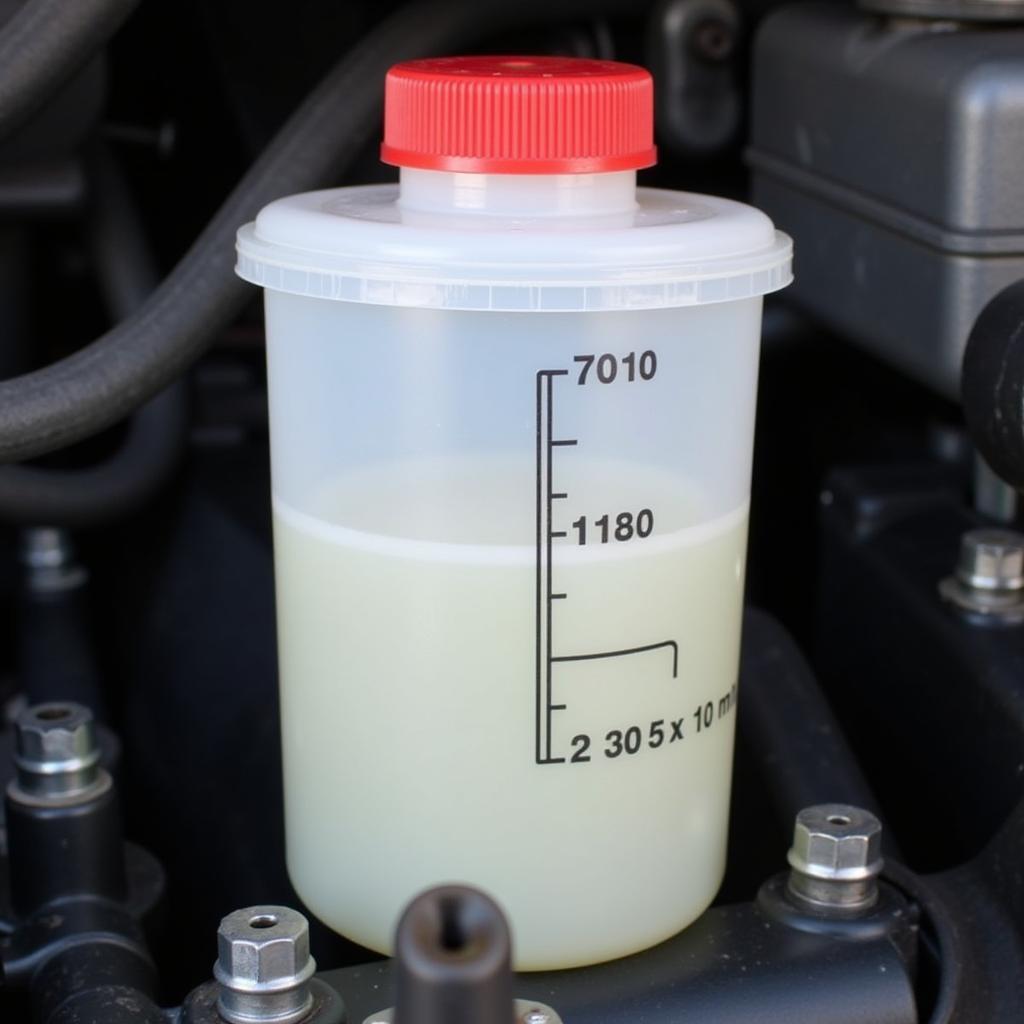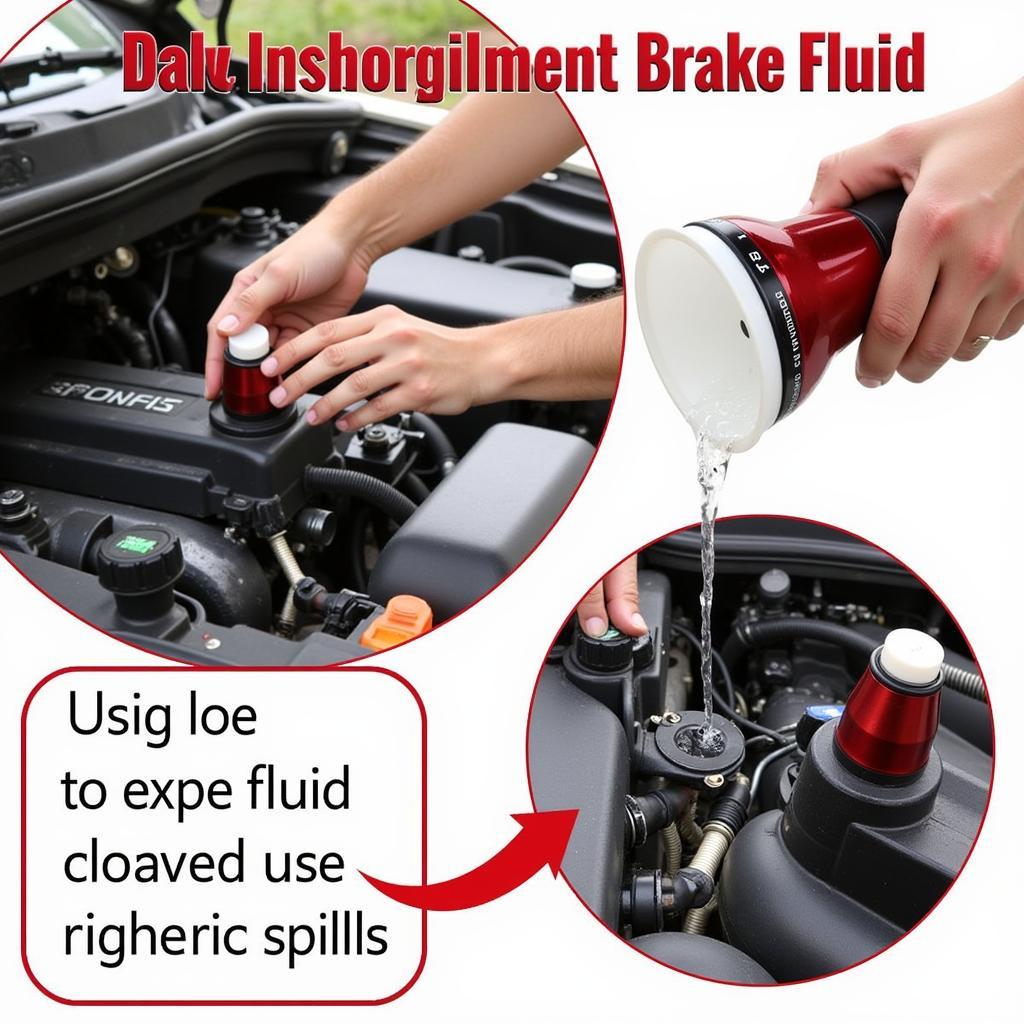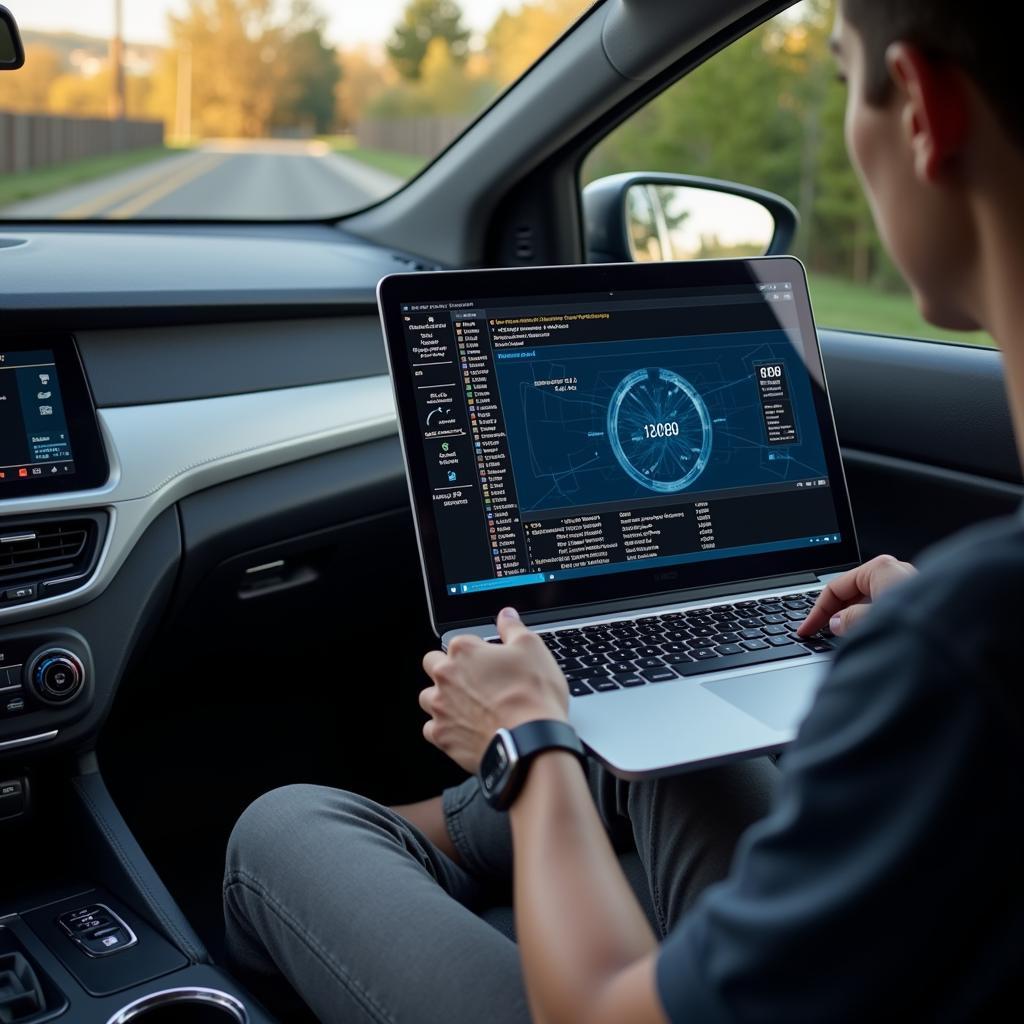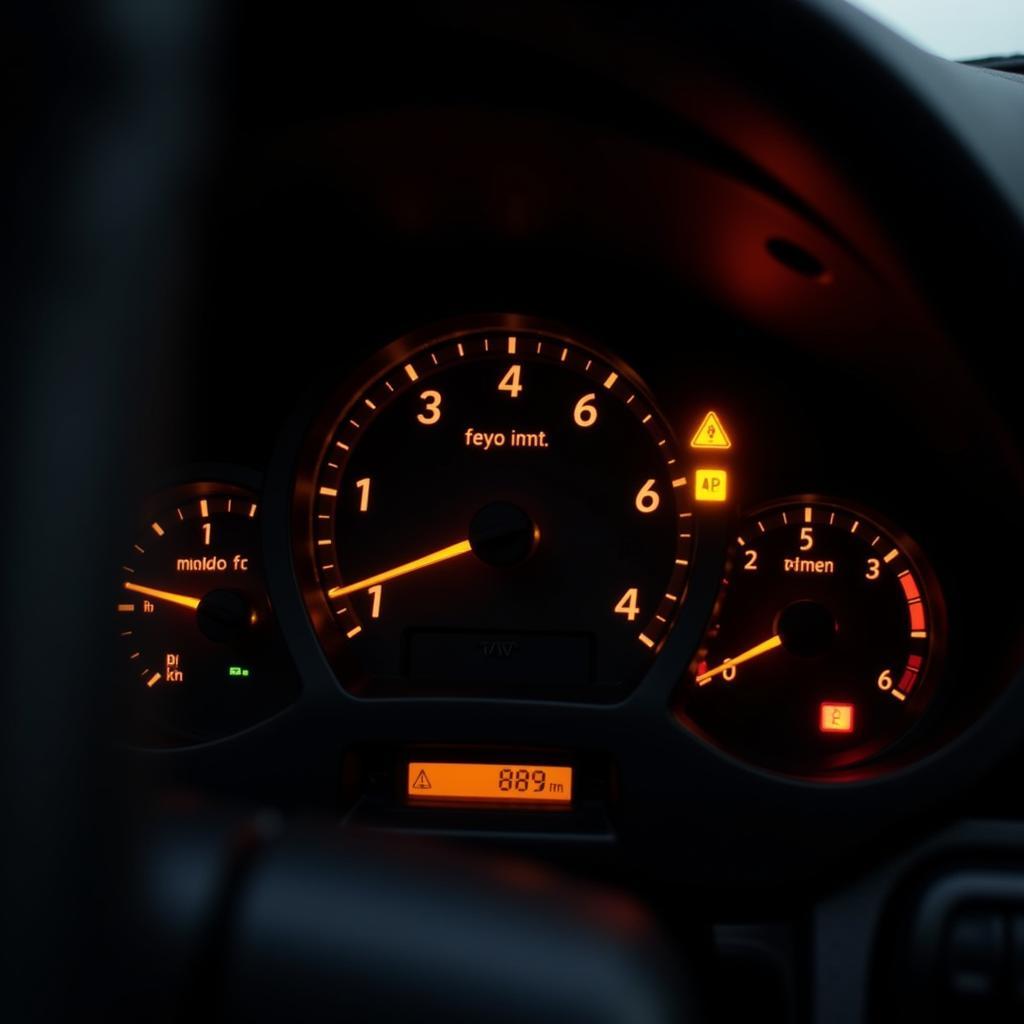That dreaded brake fluid warning light has illuminated your dashboard. This small light carries a big message: something isn’t right with your braking system. Understanding what triggers this light and how to address the underlying issue is crucial for your safety and the longevity of your vehicle.
Why is My Brake Fluid Warning Light On?
Several factors can trigger the brake fluid warning light. The most common culprit is low brake fluid. As brake pads wear down, the brake calipers need more fluid to compensate. If the fluid level drops too low, it triggers the warning light. A leak in the brake lines or a faulty brake master cylinder can also cause a significant drop in brake fluid level. Ignoring this warning can lead to brake failure, putting you and others at risk.
 Low Brake Fluid Level in Reservoir
Low Brake Fluid Level in Reservoir
Another potential cause is a problem with the brake fluid pressure sensor. This sensor monitors the pressure within the brake system and alerts the driver if it detects an abnormality. A malfunctioning sensor can trigger the warning light even if the fluid level is adequate.
Troubleshooting the Brake Fluid Warning Light
If your brake fluid warning light comes on, the first step is to safely pull over and check the brake fluid level in the reservoir. Locate the reservoir (usually near the firewall on the driver’s side) and carefully remove the cap. Check the fluid level against the minimum and maximum markings. If the fluid is low, carefully add the correct type of brake fluid recommended by your vehicle manufacturer.
 Adding Brake Fluid to Reservoir
Adding Brake Fluid to Reservoir
Important: Never drive with low brake fluid. If the fluid is significantly low, it could indicate a leak, which requires immediate professional attention.
What if the Fluid Level is Okay?
If the brake fluid level is adequate, the problem might lie with the brake fluid pressure sensor or other components within the braking system. In this case, it’s crucial to have a qualified technician diagnose the issue. They can use specialized diagnostic tools to pinpoint the problem and recommend the necessary repairs.
Can I Drive with the Brake Fluid Light On?
Absolutely not. Driving with the brake fluid warning light on is extremely dangerous and can lead to brake failure. If the light comes on, pull over immediately and assess the situation. If you’re unsure what to do, call a qualified mechanic or towing service.
How Much Does it Cost to Fix a Brake Fluid Leak?
The cost of repairing a brake fluid leak varies depending on the location and severity of the leak. A minor leak might only require replacing a brake line, while a more significant leak could involve replacing the master cylinder or other components. It’s best to get a quote from a trusted mechanic.
“A small leak can quickly become a big problem,” says John Davis, a seasoned automotive technician with over 20 years of experience. “Ignoring a brake fluid leak can lead to expensive repairs down the line and, more importantly, compromise your safety.”
Remote Diagnostics and Software Solutions
In some cases, remote diagnostics and software updates can address certain brake system issues. Advanced diagnostic tools allow technicians to access your vehicle’s computer system remotely, identify software glitches, and install updates wirelessly. This can save time and money compared to traditional in-person diagnostics.
 Remote Diagnostics with Laptop
Remote Diagnostics with Laptop
“Remote diagnostics and programming offer a convenient and efficient way to address certain brake system issues,” explains Sarah Miller, a leading expert in automotive software solutions. “This technology allows for quicker diagnoses and faster repairs, minimizing downtime for the vehicle owner.”
Conclusion
The brake fluid warning light is a critical safety indicator that should never be ignored. Whether it’s low brake fluid, a faulty sensor, or a leak in the system, addressing the underlying issue promptly is crucial for your safety and the proper functioning of your vehicle. Don’t hesitate to seek professional assistance if you’re unsure about the cause of the problem or how to fix it. Remember, your safety is paramount.
FAQ
- What color is the brake fluid warning light? It’s typically red or amber and often resembles an exclamation point within a circle.
- Can I add any type of brake fluid to my car? No, use only the type of brake fluid recommended by your vehicle manufacturer.
- How often should I check my brake fluid level? It’s a good practice to check it at least once a month.
- What does it mean if my brake pedal feels spongy? This could indicate air in the brake lines or a problem with the master cylinder.
- Can I fix a brake fluid leak myself? While some minor leaks can be addressed with DIY repairs, it’s generally recommended to consult a qualified mechanic.
- How long can I drive with low brake fluid? You should not drive at all with low brake fluid. Pull over immediately and assess the situation.
- Is the brake fluid warning light the same as the ABS light? No, they are separate warning lights. The ABS light indicates a problem with the Anti-lock Braking System.

